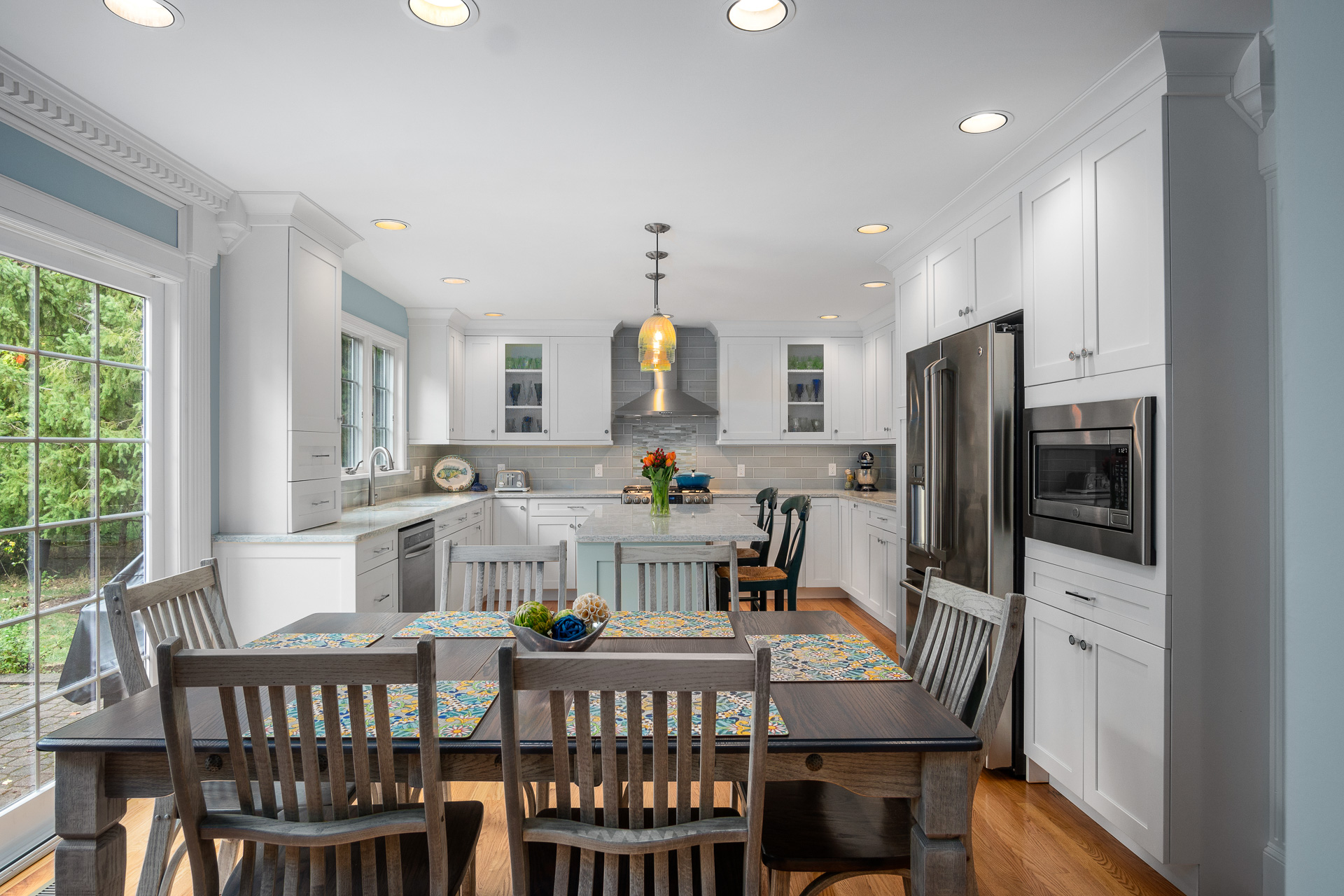The heart of any home, the kitchen has evolved significantly over the years, reflecting not only changing culinary trends but also shifts in lifestyle and design preferences. Among the numerous styles that have stood the test of time, the U-shape and L-shape kitchen layouts have remained popular choices, combining functionality, aesthetics, and adaptability to various spaces. From classic to contemporary, these styles have seamlessly integrated timeless appeal with trendy modifications, making them indispensable components of modern kitchen design.
The U shape vs U shaped Kitchen while distinct in their configurations, share the common goal of optimizing space and promoting efficiency. The U-shaped kitchen, characterized by three walls of cabinetry and appliances forming a U configuration, has long been favored for its ability to accommodate multiple cooks and provide ample storage and countertop space. In contrast, the L-shaped layout, with cabinets and appliances positioned along two adjacent walls, offers a more open and flexible design, often integrating with living or dining areas to create a seamless flow within the home. Understanding the nuances and versatility of these styles is essential in appreciating their journey from classic to contemporary trends in kitchen design.
Classic U-shape and L-shape kitchens have left an indelible mark on interior design, emphasizing functionality over flair. Traditional U-shaped kitchens were characterized by an enclosed workspace, fostering a practical environment for cooking and meal preparation. With an emphasis on maximizing every inch of available space, these kitchens often boasted floor-to-ceiling cabinetry and centralized workstations, ensuring easy access to all cooking essentials. Similarly, classic L-shaped kitchens adhered to a compact and efficient layout, providing a cohesive cooking space within a limited area. In both cases, the focus was on optimizing the kitchen’s efficiency without compromising on ergonomics.
As design trends shifted towards more contemporary aesthetics, the U-shape and L-shape kitchen styles underwent a metamorphosis, embracing sleek and minimalist elements while retaining their core functionality. Contemporary U-shaped kitchens integrated modern materials such as stainless steel, glass, and polished wood, creating a seamless blend of elegance and efficiency. With the incorporation of kitchen islands or peninsulas, contemporary U-shaped kitchens have become dynamic hubs for socializing, entertaining, and culinary exploration. Simultaneously, contemporary L-shaped kitchens embraced an open-plan concept, promoting a sense of spaciousness and airiness. By incorporating minimalistic cabinetry, sleek appliances, and innovative storage solutions, modern L-shaped kitchens have redefined the notion of practicality, emphasizing the importance of uncluttered and streamlined designs.
The recent surge in open-concept living has revolutionized the perception of both U-shape and L-shape kitchens, fostering a seamless integration of these layouts with the surrounding living spaces. Contemporary U-shaped kitchens have transcended their conventional boundaries, transforming into multifunctional spaces that serve as both culinary sanctuaries and social hubs. By incorporating smart technology, ergonomic designs, and personalized touches, these kitchens have adapted to the needs of the modern homeowner, offering a perfect blend of practicality and style. Similarly, contemporary L-shaped kitchens have embraced a holistic approach, blurring the lines between cooking and communal areas. With an emphasis on creating a cohesive living environment, these kitchens often feature breakfast bars, integrated dining spaces, and innovative storage solutions, fostering a harmonious balance between form and function.
In the realm of kitchen design, the interplay between timeless elegance and contemporary trends is a delicate balance that defines the evolution of the U-shape and L-shape kitchen styles. While the U-shape kitchen has maintained its reputation as a practical and efficient workspace, its contemporary adaptations have redefined its role as a versatile and multifaceted culinary haven. On the other hand, the L-shape kitchen, with its emphasis on openness and flexibility, has evolved into a stylish and adaptable living space, reflecting the changing dynamics of modern lifestyles. Both these styles have successfully withstood the test of time, proving their resilience and adaptability in an ever-changing design landscape.
As homeowners continue to seek kitchen designs that blend functionality with aesthetic appeal, the U-shape and L-shape layouts remain steadfast in their ability to cater to diverse preferences and spatial constraints. Whether it’s the classic charm of a U-shaped kitchen or the contemporary allure of an L-shaped design, these styles epitomize the marriage of timeless tradition and modern innovation, embodying the essence of a well-designed, efficient, and visually appealing kitchen space.

